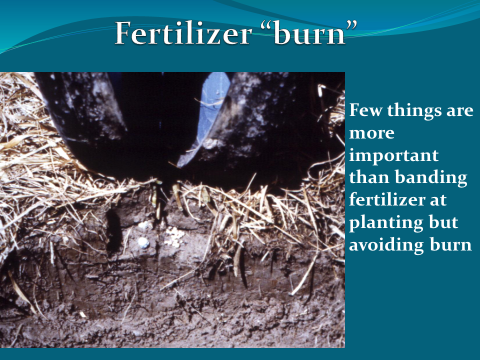Opener influences on yield
THE INFLUENCE OF NO-TILLAGE MACHINES ON CROP YIELD
(and how Cross Slot® no-tillage stacks up)
Dr. C John Baker, Feilding, New Zealand © 2016
Question: It is difficult to believe that a no-tillage drill can influence crop yield. Surely it’s the soil, weather, genetics, fertilizers, diseases, and pests and crop husbandry that do that?
Answer: A significant amount of recent scientific research has been devoted to finding out exactly what influence a no-tillage drill and its openers can have on (1) stand establishment and (2) crop yield.
The results are summarised below:
Conservation tillage is often promoted as capable of regenerating damaged soil health, which has a direct influence on crop yield (especially long term). But 50 years of a range of conservation tillage practices casts doubt on whether or not this is being achieved universally. It is now clear that Here is why: (Note: 9 of the 12 issues outlined below are backed by published international science*. 3 are the result of extensive field observation**)
(a)* No-tillage drill openers have a major influence on the micro-environment that seeds and seedlings experience in untilled soils. (b)* This micro-environmental influence is itself largely determined by surface residues, particularly where they finish up relative to the drilled slot after the machine has passed. (c)* Drill openers have a major influence on how seeds derive water for germination (known as imbibition). In untilled soils, vapour-phase water (or soil humidity) is an important germination resource that plays little roll in tilled soils.
(e)** With no-tillage, a slot wall is created between the slot zone and the undisturbed soil alongside. If these no-tillage slot walls are nearly vertical (and even worse are compacted or at least smeared – see below) they may restrict early root growth to the extent that in severe cases the roots never leave the slot zone and the crop performs poorly. (f)* Drill openers influence soil compaction in the slot. Compaction, in turn, can influence how well or poorly juvenile seedling roots develop.
(g)** In-slot smearing is often looked on as a thin layer of compaction. So long as a smear can be kept moist it usually presents little restriction to seedling root growth. But if an in-slot smear is allowed to dry, it becomes a crust where it can be as detrimental as compaction. (h)* Some no-tillage openers have a negative effect on germination by pushing uncut straw into the slot (called “tucking” or “hairpinning”). In anaerobic conditions especially, if the seeds come to rest in the hairpins (as is common with most disc openers except Cross Slot) fermentation of the “hairpinned” straw creates acetic acid that kill seeds and seedlings.
(j)* No-tillage drill openers influence how well drilled slots are closed or covered. Covering is harder to achieve than in tilled soils because the soil is usually less friable. Poor slot covering, in turn, influences slot drying together with bird and insect damage.
(k)** Post-drilling slot shrinkage occurs in many no-tillage slots, especially when warm windy (drying) weather follows drilling into an otherwise damp mouldable (“plastic”) soil. When this occurs, most vertical (or near-vertical) no-tillage slots shrink open, exposing the seeds. Cross Slot deposits seed on horizontal shelves that remain covered regardless of slot shrinkage.
(l)* Finally, seed drill openers determine if and where fertilizer is placed (banded) during the seed drilling process. Some no-tillage openers are capable of banding fertilizer (often referred to as “double shooting”). Others are not able to do this (referred to as “single shooting”). Fertilizer banding has a greater influence on crop yield in untilled soils than in tilled soils. Summary: From the above, it would be easy to conclude that most of the issues outlined simply do not occur if the soil is tilled before seeding. But mechanical tillage does so much long-term harm to soil structure, organic matter retention, porosity, infiltration, erosion, water holding capacity, fertility, weed seed proliferation, compaction and biological health, (all of which manifest themselves as declining crop yields) that tillage is no-longer a viable option for producing the world’s food. On the other hand, unless no-tillage is practiced properly, it is not always reliable substitute for tillage. The real role of Cross Slot low-disturbance no-tillage has been to eliminate the weaknesses of other less-exacting and less-focused conservation tillage options. The end result of prolonged Cross Slot low-disturbance no-tillage is the regeneration of soil health, improved crop yields and with them, the sustainability of world food production. Of course soil, weather, genetic makeup, fertilizers, husbandry, weeds, pests and diseases are also fundamental determinants of crop yield. But even when these resources are optimised, the effect can be negative (or no better than neutral) unless no-tillage openers are able to position seeds, seedlings and growing plants to take full advantage of such resources. Put another way: Sub-standard no-tillage opener designs can negate the positive effects offered by good soil, weather, genetics, fertilizers, weed, pest and disease control and husbandry, while good designs encourage plants to utilize these resources to advantage. To read the full article, Click here. |


 (d) No-tillage drill openers can also have an important influence on aeration (or lack of aeration) around seeds and seedling roots in wet soils. Residues returned over the slot in wet soils attract earthworms to the slot zone since residues are the earthworms’ main food source. The earthworms, in turn, aerate the slot zone, which has a measurable effect on germination and seedling survival in wet conditions.
(d) No-tillage drill openers can also have an important influence on aeration (or lack of aeration) around seeds and seedling roots in wet soils. Residues returned over the slot in wet soils attract earthworms to the slot zone since residues are the earthworms’ main food source. The earthworms, in turn, aerate the slot zone, which has a measurable effect on germination and seedling survival in wet conditions.



